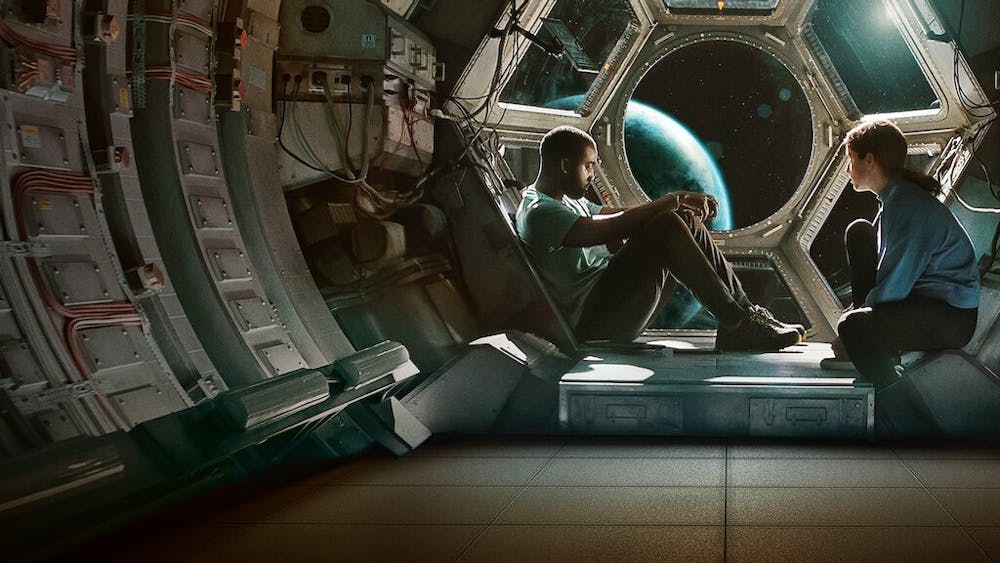This review contains spoilers.
If you were stranded on a desert island with three other people with only enough resources for three of you to survive until help arrived, what would you do? This is the question that “Stowaway” seeks to solve. The twist is that instead of an island, you’re in space and instead of discussing all possible options, the filmmakers restrict you to one scenario but throw in a few twists and turns as a treat.
The film opens with the crew taking off on a mission to Mars. We hear the different intercoms from mission control and the crew performing final checks and confirmations before they finally embark on a two-year journey to the red planet.
The opening shot is an elegant “oner” — a shot with no cuts — that seems to scream at the audience that this is not your typical space film. The rest of the film would seem to abandon that idea, however.
There are two things that are important to note at this point in the film. The space crew consists of only three people: Zoe, played by Anna Kendrick, Marina (largely referred to as “Commander” throughout the film), played by Toni Collette, and David, played by Daniel Dae Kim. The other important thing to note is the ship appears to be slightly off-course and is not thrusting as high as it was calculated to. Marina nearly aborts the mission, but mission control tells her everything is going as planned.
The performances by each of the actors are the strongest elements of the film. Shamier Anderson’s Michael, who we’ll get to in a minute, is a particular highlight.
We finally reach outer space and see the crew dock at the space station with some light-hearted banter. David remarks how Zoe wasted “800 grams” of space on two Yale University mugs, to which Zoe remarks that the 800 grams was worth it in order to get a reaction out of David, who attended the rival university, Harvard. It’s these smaller and light-hearted moments that keep you engaged, but those shortly disappear after the first 30 minutes.
This is an excellent time to note that the sound design on this film is particularly impressive. Had the release date come later in the year, it certainly would have been an awards contender. The sound design is so incredibly realistic that I frequently found myself gawking at the accurate reproduction of intricate and minute sounds within each scene.
We then learn some more about the characters. Marina is, obviously, the commander of the ship and is in charge of the mission, Zoe is a doctor and serves as the ships’ medical professional and David is a botanist who is studying micro-greens and algae. Like most space films, though, our crew is exceptionally talented at almost every task, so these specific roles only become relevant when the plot deems them to be.
The crux of the film is the discovery of another human who falls out of a compartment on the roof of the spaceship. The carbon dioxide removal assembly (CDRA), a device that scrubs carbon dioxide out of the air to keep the crew from asphyxiating, is permanently damaged somewhere along the way.
This is when we meet Michael, who happens to still be alive. He is initially frightened, but eventually calms down and tells the rest of the crew that he was working on the spaceship before the crew left when he slipped and fell unconscious.
With the CDRA being permanently damaged, the four crew members will asphyxiate before they reach Mars; they only have enough oxygen for three. This is the only truly interesting moment in the entire film. For a couple of minutes, you are entirely invested in the crew’s solution to this extraordinarily complex problem: sacrifice one life to save the other three.
The issue is that the film never truly explores all of the possible scenarios this issue could present. Instead, it locks you into the utilitarian idea that Michael, the titular stowaway, is the least qualified to be there and, thus, shall be sacrificed. It means that most of the film will not really be spent considering the most interesting thing the film has going for it. Instead, it will test your patience with unsuccessful alternatives and see just how long it can put off it’s inevitable ending.
Get content from The Daily Lobo delivered to your inbox
With that said, though, you truly do get to like Michael by the end of the movie. Anderson really does imbue his character with so much kindness and warmth that it’s an impossibility for you to not sympathize with him.
Of course, the film does not end with Michael dying but Zoe, because in a film that constantly enforces the fact that Michael will die, the least obvious plot twist anyone could come up with would be that Michael does not die. I’m being sarcastic, of course.
The final shot shows Zoe being withered away by space radiation, her character dying with a whimper not unlike the film that she is a part of. By the time the credits roll and you’ve woken up from your two-hour nap, you’ll wish the filmmakers decided to kill you and save you from having to sit through, or sleep through, the entire two hours of this film.
John Scott is a senior reporter at the Daily Lobo. He can be contacted at culture@dailylobo.com or on Twitter @JScott050901






